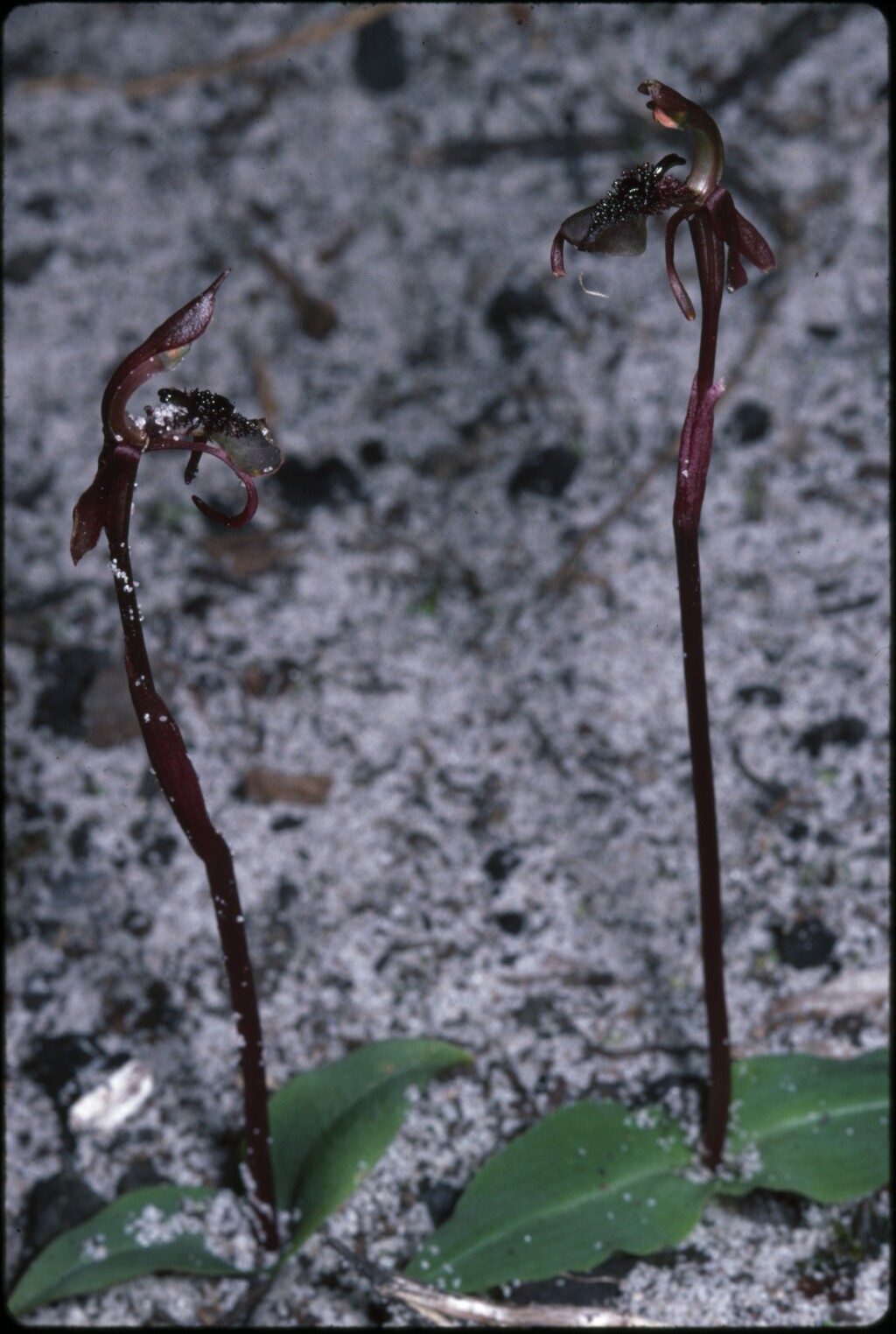Chiloglottis curviclavia
D.L.JonesFlowering plant 5–15 cm tall (scape elongating after pollination). Leaves ovate-elliptic to oblong-lanceolate, 25–60 mm long, 10–30 mm wide, stem-clasping, dark green. Flower greenish-bronze or purplish; dorsal sepal erect, incurved, narrow-spathulate, 10–13 mm long, constricted apically into a short point; lateral sepals spreading and recurved, linear, commonly recurve beneath the labellum, 10–13 mm long, with short apical clubs; petals deflexed against ovary, lanceolate, slightly asymmetric, 8–10 mm long. Labellum porrect, trapezium-shaped, long-clawed, somewhat curved, 9–11 mm long, apex with a blunt short point; calli dark red to blackish, forming a thick central band, tapering to apex; major basal gland large, black, stalked and projecting above the main mass of labellum glands, usually notched, medial gland prominent, black, sessile, surrounded by abundant slender, stalked, usually pink or purplish glands, extending almost to the apex. Column wings hardly hooding anther. Flowers Dec.–May.
GleP, VVP, GipP, OtP, WaP, CVU, GGr, EGL, EGU, WPro, HSF, HNF, OtR, Strz, MonT, HFE, VAlp. Also NSW, ACT. Often in shady places in coastal scrublands, heathlands and open forests, mostly of southern Victoria, but with a few more inland occurrences both east and west of Melbourne.
Studies of the pollinating insect have indicated that C. curviclavia warrants recognition as a distinct species from C. reflexa in which it was formerly included. However, according to Jones 2018 a) the application of the name Chiloglottis reflexa in Victoria had been in error, and what was known as C. trilabra is now correctly regarded as C. reflexa.
 Spinning
SpinningJones, D.L. (2018 a). Two new morphologically dstinct species of Chiloglottis R.Br. (Orchidaceae: Drakaeinae) from south-eastern Australia. Australian Orchid Review 83(3): 37–43.

